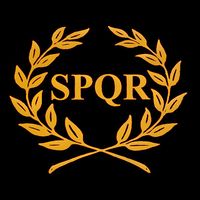Sodalitas Graeciae (Nova Roma)/Bouleuterion
(content) |
|||
| Line 47: | Line 47: | ||
*Xanthe (Scholastica), Arkhousa | *Xanthe (Scholastica), Arkhousa | ||
| + | |||
| + | '''[http://groups.yahoo.com/group/BouleSG/ Contact the Boule]''' | ||
}} | }} | ||
| + | {{PortalBox | title=''πόλεις'' - Sodalitas Graeciae City-States| content=Contact someone in our Local Chapters: | ||
| + | |||
| + | *''No Local Chapters Yet'' | ||
| + | }} | ||
</div> | </div> | ||
</div> | </div> | ||
Revision as of 04:03, 21 April 2008
Home| Latíné | Deutsch | Español | Français | Italiano | Magyar | Português | Română | Русский | English
The Bouleuterion of the Ancient Greek City-State
The boule, a basic institution of the ancient city-state in historical times, consisted of the citizens' representatives who assembled in order to confer and decide about public affairs. The word Bouleuterion is composed from Greek 'boule' (council) and the suffix -terion (place for doing something). The Bouleuterion is the building where the administration took place. It is shaped as early Greek temples were shaped in a kind of square horse-shoe and it has tiered seating arrangement. The Boule, better known as the council of 500, was the city council of ancient Athens. The Bouleuterion therefore is the building the council speaks in. It was located in the Ancient Agora of Athens. Other Bouleuteria:
- Sicily: Akrai | Morgantina
Ancient Greek Government
The bounds of the ancient polis often centered around a citadel, called the acropolis, and would of necessity also have an agora (market) and typically one or more temples and a gymnasium. Note that many of a polis' citizens would have lived in the suburbs or countryside. The Greeks did not regard the polis as a territorial grouping so much as a religious and political association: while the polis would control territory and colonies beyond the city itself, the polis would not simply consist of a geographical area.
Each city was composed of several tribes or demes, which were in turn composed of phratries and finally gentes. Metics (resident foreigners) and slaves lay outside this organization. Birth typically determined citizenship. Each polis would also worship a number of patron deities for protection and kept its own particular festivals and customs.
In the East beyond Asia Minor a major instrument of hellenization by Alexander the Great was the polis. He is said to have founded no fewer than seventy cities, destined to become centers of Greek influence; and the great majority of these were in lands in which city-life was almost unknown. In this respect his example was emulated by his successors, the diadochi.
Polis was frequently divided into three types of inhabitants. The first, and highest, “group” of inhabitants are citizens with political rights. Then are the citizens without political rights. Lastly are the non-citizen.
List of Ancient Greek City-StatesSodalitas Graeciae Government
2761/2008: Elected Members of the Boule
- Phronekrate (Volentia), Arkhousa Basilissa
- Dienekes, Arkhon
- Modesta, Arkhousa
- Poplikwla (Poplicola), Arkhon
- Xanthe (Scholastica), Arkhousa
Contact someone in our Local Chapters:
- No Local Chapters Yet

